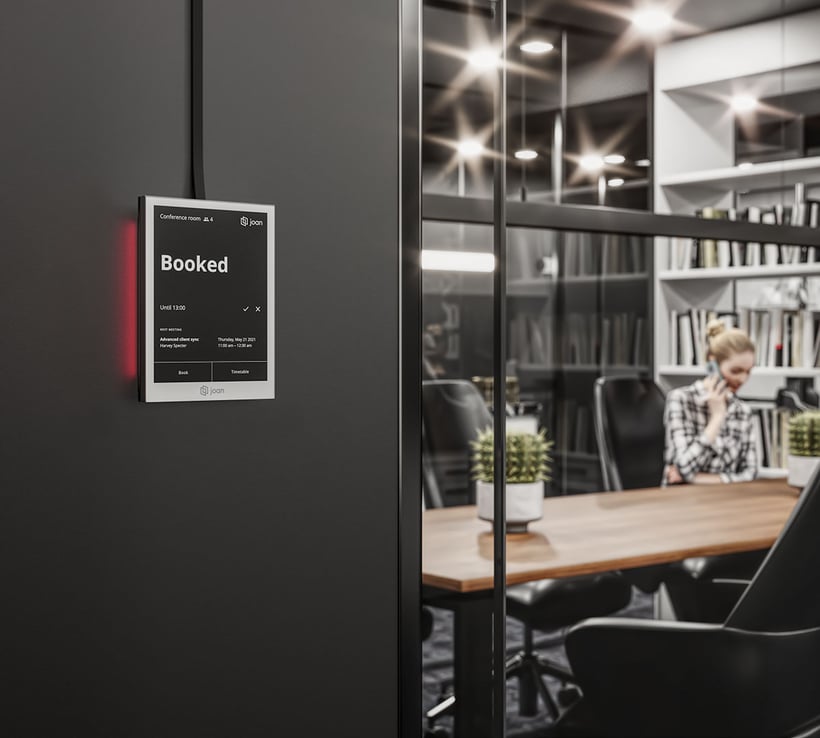The question of the year: which companies will go hybrid and which won’t?
Numerous companies have given up some or all of their real estate to accommodate hybrid or fully-remote work conditions. Still, some organizations expect their employees to return to the office. Although there’s a strong push for companies to shift to hybrid and flexible work policies, some are more successful than others with remote work thrown into the mix.
Over the past two years, most corporations have been obligated to send their employees home for their good. With COVID-19 at large, it hasn’t been safe for employees to work on-site. Even with companies shifting to remote conditions with little advance notice, productivity has remained steady. Still, many companies fear it’s collaboration that’s suffering.
In the words of Reed Hastings, the CEO of Netflix, “Not being able to get together in person, particularly internationally, is a pure negative.” Although productivity has been consistent, many managers and executives have seen a negative side to remote conditions post-pandemic. And while many are struggling to connect with their team members, the issue isn’t simply the loss of micromanagement and managers looking to regain control, but about making meaningful connections and opening doors for employees to learn and grow.
If an employee doesn’t see growth opportunities within a company, it’s only a matter of time before they hand in their resignation. Over the past two years, the world has been monitoring productivity levels, patting their employees on the back for well-handled transitions to remote conditions. Yet, how can we measure growth and opportunities? How are employees suffering?
If the Great Resignation is any indication, employees are feeling trapped, for one reason or another, and quitting their jobs in droves. Still, according to CNBC, companies not switching to remote or hybrid work conditions could “lose out on 70 percent" of the talent pool to companies who are.
Thus, a change needs to happen, whether we’re ready for it or not. Organizations simply need to face the new norm and find ways to make the latest work models work.
What are the different types of work models?
There are three key models companies are implementing in 2022: on-site, hybrid, or fully-remote work conditions. Each of these models has its advantages and each has its disadvantages. Let’s have a look.
In-office model
The in-office model is the one companies are most used to. This setup has been the norm for decades, with only the most daring companies trying any other style.
This model encourages employees to be on-site full-time with little to no remote work opportunities. Companies that have maintained their work environments for the duration of the pandemic will simply reopen their doors and send their employees back to their assigned desks. The in-office model is great for collaboration purposes, however, companies can’t improve collaboration and team growth if teammates don’t stick around long enough to bond and develop relationships.
Companies looking to remain in the past and not update their workplace protocols will be hit harder than others by the Great Resignation. Teammates will come and go, wasting company time and resources on poor turnover rates.
One thing to keep in mind: most companies have grown since the start of the pandemic. Therefore, offices that were once large enough to house all the company’s employees may be too small two years later, further complicating the return-to-office process.
Pros
- Simplified return-to-office protocols
- Superior employee collaboration
Cons
- Low employee satisfaction
- High turnover rates
- High real estate and operational costs

Hybrid model
The hybrid work model is the most common choice heading into 2022. Although some companies say they’ve gone fully remote, most actually still pay for offices around the world. These companies are arguably “semi-remote.”
The hybrid workplace is what employees expect. Even Netflix, which is resolutely pro-office, is still considering four days in office with one work-from-home day per workweek. Although hybrid companies will still be affected by the Great Resignation, the difference is that they’ll have a decent pick of candidates compared to in-office companies.
With a hybrid model, only a percentage of employees will be on-site any day of the week. Therefore, companies won’t need as much office space per employee as they did before the pandemic. Still, these companies will have to learn, through trial and error, how to connect their employees and strengthen company culture and employee engagement. Most of these companies will look into flexible work options.
Employees who prefer a hybrid model enjoy the perks of flexible work schedules and elevated work-life balance.
Pros
- Increased employee satisfaction and wellness
- Lower real estate and operational costs
Cons
- Challenging communication and collaboration
- Major restructuring involved
- Uncharted experience
Fully-remote model
The fully-remote model is more-or-less like the pandemic that never ends. Most office workers have been sentenced to remote work models for the past two years due to COVID-19, whether they wanted the change or not.
Companies that have opted to go fully remote are hiring around the world. They’ve invested in such a mishmash of employees in different locales and time zones that they can’t even switch back to in-office conditions. With this model, there’s no central workspace. Everyone is remote, allowing for more flexibility. Still, while hybrid companies can still invest in on-site, face-to-face bonding, remote teams will, more often than not, never meet in person.
Although many employees would love to have a fully-remote job, there are setbacks. Remote employees may not feel connected enough to grow within the company. The company culture may also be weak, resulting in higher turnover rates than the hybrid model.
Pros
- Superior flexibility
- High employee satisfaction and wellness
- No real estate costs
Cons
- Challenging communication and collaboration
- Weak company culture
- Questionable turnover rates
- Uncharted experience
How to choose the best work model for your company
For each of these models, the pros and cons nearly balance each other out — there’s good and bad to each approach. The biggest question is, which one is right for your company? There will always be some sacrifice or another: poor turnover in exchange for strong collaboration; heightened operational costs in exchange for keeping things simple…
Let’s look at some of the deciding factors companies are facing this year:
Costs
Determine the cost of each model. What real estate and operational costs are you looking at? What’s the cost of each employee turnover? How much does it cost to equip each employee with their own work-from-home equipment?
Employee expectations
Poor employee turnover rates cost more than dollars. They cost time and energy, and a loss in productivity as new hires are brought up to speed. Years of experience can’t be easily replaced. Therefore, it’s important to give your employees a reason to stay.
83 percent of employees want hybrid work conditions moving forward. If maintaining talent is high on your list of priorities, a hybrid or remote model will help you hang onto your top employees.
Company conditions
Every company faces challenges in implementing a new model. Therefore, it’s important that these companies ask themselves the following questions:
- Does the company have enough space in the office? If not, consider going hybrid.
- Has there been a difference in productivity with employees working from home? If productivity has decreased, transition them back to an in-office model.
- How has your turnover rate been affected? If your turnover rate has increased, consider a hybrid setup.
- Is employee happiness important to you? If it is, choose a hybrid or fully-remote model.
- Is the management team remote or in the office? If they're in the office, consider a hybrid or in-office model.
With Joan, you can get the most out of any working model
How about efficiency? Is efficiency important to you?
Companies are already stressed enough about returning to the office. Whether they’re returning to fully in-office or hybrid conditions, the workplace needs to change.
For what’s likely to be years, companies will need to consider physical distancing and health precautions on-site — masks and staying six feet apart is the new normal. As for hybrid models, businesses need to navigate the flexibility of having only some of their workforce in the office at a time. One way or another, the office experience will transform in the coming year.
Joan offers a full office management system, helping businesses manage rooms, desks, guests, and more around the office.

Joan Room solutions minimize meeting interruptions, double-bookings, and under-utilized spaces. Employees can book rooms virtually before even arriving at the office. All bookings are synced throughout the office, updating in real-time so everyone's on the same page.
What’s more, Joan offers a desk booking app, ensuring that each employee has a desk reserved for their in-office workdays. The app is complete with customizable floor plans and wayfinding solutions.
Want to try Joan's solution in practice?
Insights that keep your office running smoothly
Fresh content on productivity, space management, and the future of work. Perfect for managers, admins, and busy teams.
Join thousands of workplace professionals who already read the Joan blog. Unsubscribe anytime.
